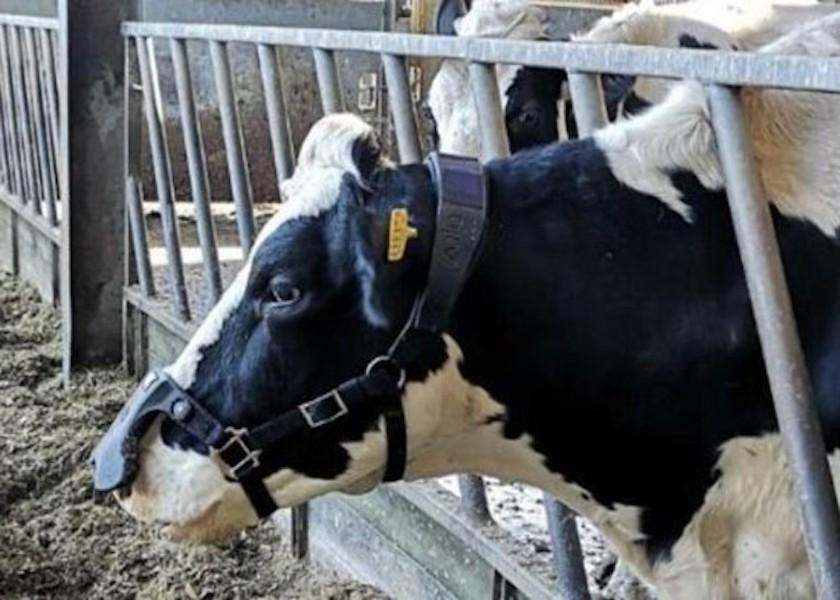The Latest Mask Design: For Cows

A British start-up company is unveiling the latest in face mask designs – for cows.
Zelp Ltd., a UK-based technology firm, has developed a mask to capture methane emitted from cows breathing or burping. With a stated goal of reducing global warming, the company claims the masks are capable of reducing cattle methane emissions by 60%.
The strap-on mask is designed to be adjusted for head size, and captures methane at the nostrils when the cow exhales. The gas is channeled toward an oxidation mechanism inside the mask apparatus, which contains a mini catalytic converter that breaks the methane into carbon dioxide and water, and expels it from the device.
“The technology detects, captures and oxidizes methane when it is exhaled by the animals,” said Francisco Norris, one of two brothers who founded Zelp (short for “Zero Emissions Livestock Project”). He and his brother, Patricio, grew up on an Argentine cattle ranch.
Norris said Zelp has conducted experimental trials with institutions in Argentina and the UK – including the Royal Veterinary College – showing no significant impact by the mask on animal behavior or feeding. However, the company has yet to produce peer-reviewed research that proves field efficacy or wearability of the device.
Frank Mitloehner, Professor and Air Quality Extension Specialist at the University of California-Davis, is not convinced that the invention will be practical in field settings. He told Washington state-based Darigold: “While I think, as a scientist, it’s interesting as a concept, I’m not sure it will work in practice. These things will not stay in place. They will get dirty.”
At an estimated cost of $50-80 each, farms already operating on razor-thin margins are unlikely to adopt the technology voluntarily. “Dairy producers and beef producers work off of very small margins, thus any investment would need to show a return,” Cornell University Professor of Animal Science Mike Van Amburgh told Bloomberg News.
But Zelp is counting on cost reductions via incentives from allied industries, like dairy processors eager to premiums for milk produced on farms with environmental protection measures in place.
Global ag giant Cargill, Inc. already has committed to marketing the masks to European dairy farmers starting in 2022, as soon as they become commercially available. Zelp plans an initial wide-scale production run of 50,000 units in its first 12 months of manufacturing, and a projected 200,000 masks the following year.







